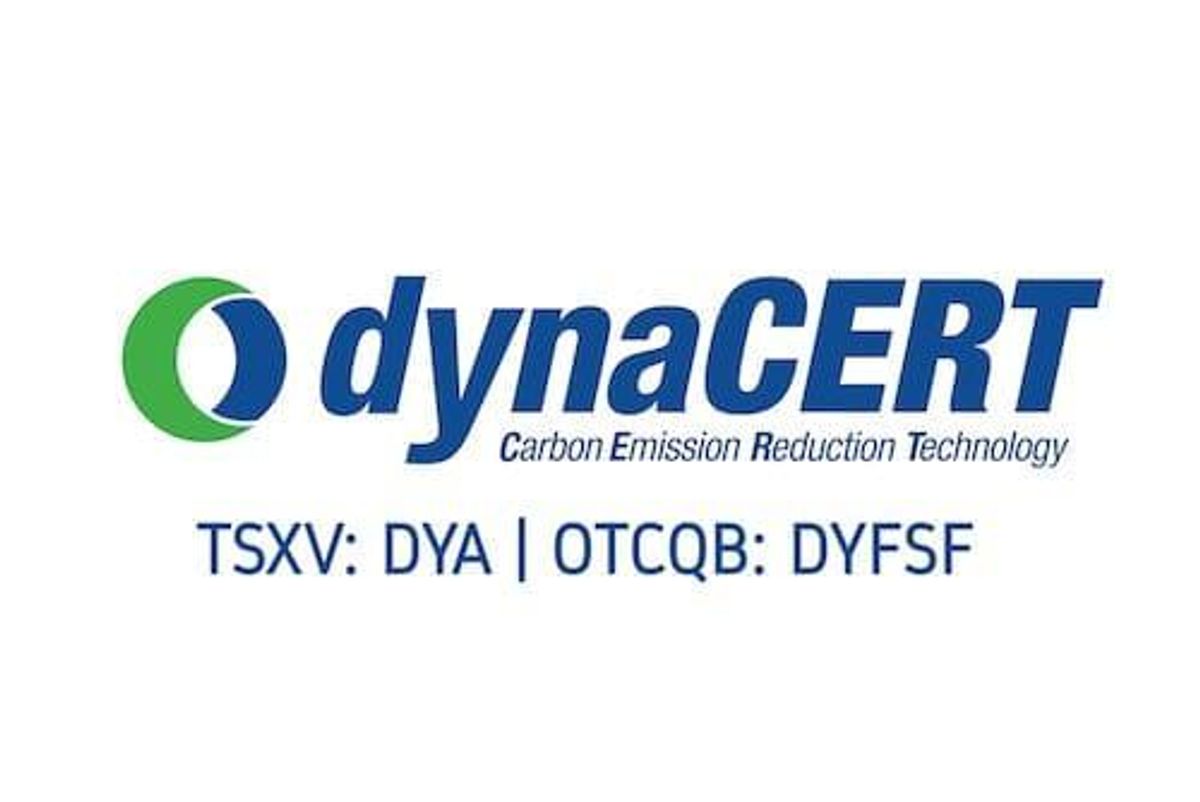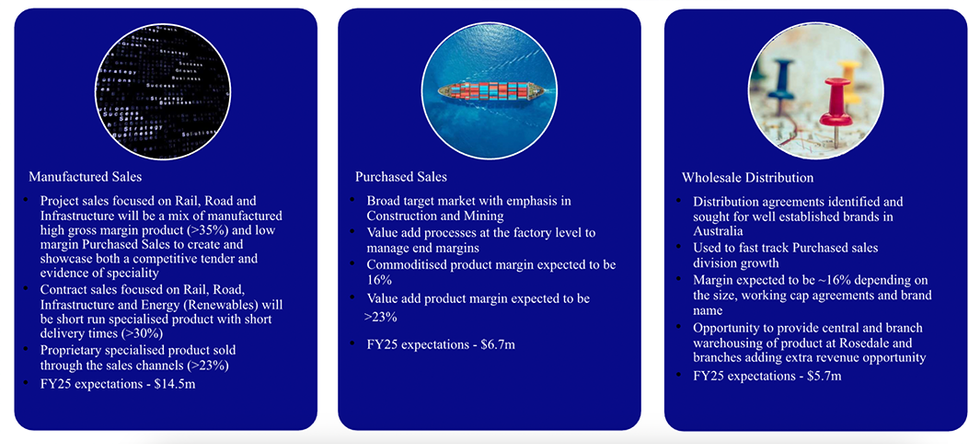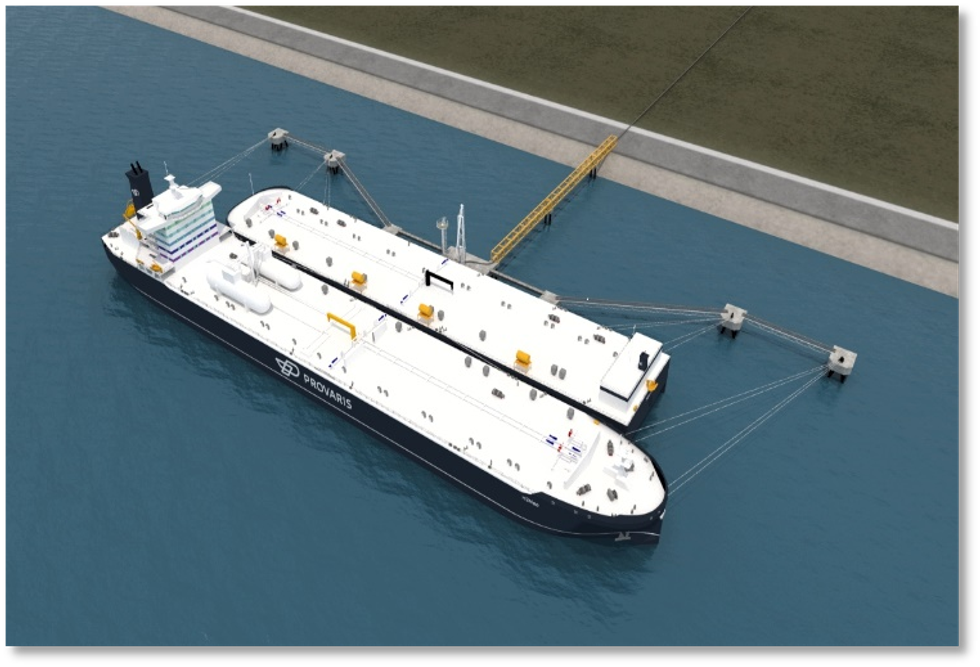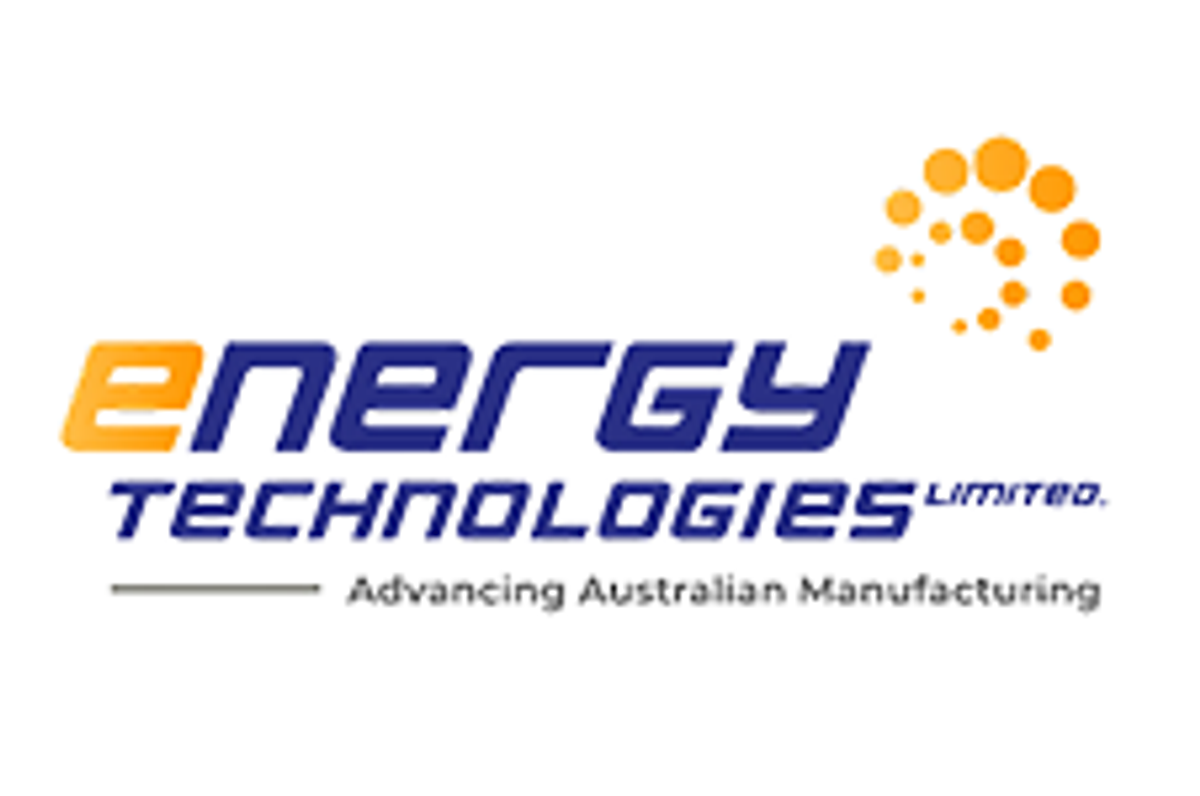- AustraliaNorth AmericaWorld
Investing News NetworkYour trusted source for investing success
- Lithium Outlook
- Oil and Gas Outlook
- Gold Outlook Report
- Uranium Outlook
- Rare Earths Outlook
- All Outlook Reports
- Top Generative AI Stocks
- Top EV Stocks
- Biggest AI Companies
- Biggest Blockchain Stocks
- Biggest Cryptocurrency-mining Stocks
- Biggest Cybersecurity Companies
- Biggest Robotics Companies
- Biggest Social Media Companies
- Biggest Technology ETFs
- Artificial Intellgience ETFs
- Robotics ETFs
- Canadian Cryptocurrency ETFs
- Artificial Intelligence Outlook
- EV Outlook
- Cleantech Outlook
- Crypto Outlook
- Tech Outlook
- All Market Outlook Reports
- Cannabis Weekly Round-Up
- Top Alzheimer's Treatment Stocks
- Top Biotech Stocks
- Top Plant-based Food Stocks
- Biggest Cannabis Stocks
- Biggest Pharma Stocks
- Longevity Stocks to Watch
- Psychedelics Stocks to Watch
- Top Cobalt Stocks
- Small Biotech ETFs to Watch
- Top Life Science ETFs
- Biggest Pharmaceutical ETFs
- Life Science Outlook
- Biotech Outlook
- Cannabis Outlook
- Pharma Outlook
- Psychedelics Outlook
- All Market Outlook Reports

The FreightTech Boom and Disruption in Transportation - A Key Trend for 2020 and Beyond
Hazer Group Receives AU$6.2 Million Government Grant for Commercial Reactor Program
The Western Australian government has awarded Hazer Group (ASX:HZR) AU$6.2 million in conditional grant funding under its Lower Carbon Grants Program — Gorgon Fund.
Hazer said the grant is non-refundable and was approved via the execution of a financial assistance agreement and project plan. It will use the funds to advance its commercial reactor scale-up program.
The first iteration of Hazer's reactor technology was installed in its commercial demonstration plant (CDP) in 2023, and the company completed a test program ahead of schedule in November.
The CDP reactor is capable of large-scale application of single train capacity of up to 40,000 tonnes per year.
“We gratefully acknowledge the support of the Western Australian Government and the Gorgon Joint Venture for providing the funding to progress the important next phase of technology scale-up to commercialise Hazer's novel Western Australian technology,” Hazer CEO and Managing Director Glenn Corrie said on Tuesday (December 3).
He added that the funding will substantially support the company’s 2025/2026 work program, which is centred on advancing Hazer's commercialisation strategy for use in Australia and around the world.
Subject to Hazer’s achievement of key milestones related to its commercial reactor scale-up program at the CDP, the company will be eligible to draw down the government funding via multiple tranches.
The Lower Carbon Grants Program — Gorgon Fund is a new initiative that was established in 2024 to provide funding for local innovations and projects that support decarbonisation.
It is administered by the Western Australian government and funded by the Gorgon joint venture, which is operated by Chevron Australia and includes Australian subsidiaries of Chevron (NYSE:CVX), ExxonMobil (NYSE:XOM), Shell (NYSE:SHEL,LSE:SHEL), Osaka Gas (TSE:9532), MidOcean Energy and JERA.
“The Western Australian Government is committed to diversifying and decarbonizing the state’s economy, with a target of net zero carbon emissions by 2050," said Minister Stephen Dawson.
Don’t forget to follow us @INN_Australia for real-time news updates!
Securities Disclosure: I, Gabrielle de la Cruz, hold no direct investment interest in any company mentioned in this article.
Energy Technologies: High-quality Cable Manufacturer and Re-seller for the Expanding Energy Market
With a strong foothold in the manufacturing and distribution of copper-insulated cables, Australia-based Energy Technologies (ASX:EGY) is poised to capitalize on the growing renewable energy sector through strategic global partnerships presenting a compelling investment opportunity. The company''s wholly owned subsidiary, Bambach Wires and Cables, is the oldest cable manufacturer in Australia, and its extensive history underpins a reputation for reliability and quality.
Energy Technologies focuses its factory operations on higher-margin product lines while employing a balanced strategy of manufacturing and purchasing cables for sale. Its Rosedale facility is a significant upgrade in its manufacturing capabilities equipped with a high level of automation that supports production efficiency, processing up to 250 tonnes of copper monthly, with room for additional capacity if demand rises.

Energy Technologies also engages in purchased sales by sourcing lower-margin products from rigorously vetted suppliers throughout the globe. This approach ensures Energy Technologies can meet market demand without overextending its manufacturing resources. Purchased sales for FY25 are projected to contribute an additional AU$6.7 million to the company’s revenue.
Company Highlights
- Energy Technologies produces low-, medium-, and high-voltage cables, with over 90 percent of its materials sourced locally in Australia.
- The company is strategically aligned with electrification and renewable energy trends, catering to infrastructure, solar, wind and mining industries.
- Key partnerships with Gantner Instruments and Tratos Group expand its product offerings for solar farms, wind turbines and subsea transmission lines.
- The company’s partnerships position it as a comprehensive supplier for large-scale renewable energy projects, projected to grow to AU$6 billion annually by 2034.
This Energy Technologies profile is part of a paid investor education campaign.*
Click here to connect with Energy Technologies (ASX:EGY) to receive an Investor Presentation
Payment under JDA with Yinson to develop CO2 storage and marine transport solutions
Provaris Energy Ltd (Provaris, ASX.PV1) is pleased to provide an update to shareholders on the Joint Development Agreement (JDA) with Yinson Production Offshore Pte Ltd (Yinson), as announced on 1 October 2024.
Yinson has made a payment of USD 200,000 related to Technical Service Fees for Provaris’ provision of its background IP and other technical information and services for the CO2 Tank project scope of work under the JDA, which commenced in October 2024. The agreed project scope and timetable for concept design activities runs into Q1 2025 where an update will be provided in conjunction with Yinson.
Background to the JDA for new CO2 Tank design
As announced on 1 October 2024, Yinson and Provaris are jointly evaluating the technical and economic viability of adapting Provaris’ proprietary tank design for compressed hydrogen to develop innovative and cost competitive alternatives for bulk-scale storage and transport of liquid CO2. The collaboration will also assess the potential for other gases such as ammonia.
Currently, there is no ship transport of CO2 in a low pressure and temperature range suitable for long sailing distances and large cargo volumes. This collaboration aims to help develop a new CO2 Tank design solution that will address current CO2 transit and storage limitations.
The development of CO2 storage and transport infrastructure is crucial for the widespread deployment of carbon capture, which is a critical pillar in meeting global emission reduction targets. The design of bulk scale CO2 Tanks is important for maximizing the amount of CO2 that can be stored and transported in a single cargo.
Provaris is being advised by the Energy Infrastructure Group, Clarksons Norway AS.
Click here for the full ASX Release
This article includes content from Provaris Energy, licensed for the purpose of publishing on Investing News Australia. This article does not constitute financial product advice. It is your responsibility to perform proper due diligence before acting upon any information provided here. Please refer to our full disclaimer here.
Energy Technologies
Investor Insight
Leveraging its long-history and reputation as a cable manufacturer, Energy Technologies’ (EGY) push to capitalize on the growing renewable energy sector through strategic global partnerships present a compelling investment opportunity.
Overview
Australia-based Energy Technologies (ASX:EGY) has a strong foothold in the manufacture and distribution of copper-insulated cables through its wholly owned subsidiary, Bambach Wires and Cables. Since its acquisition by Energy Technologies, the company has served as a cornerstone of the company’s operations. Founded in 1936, the company is the oldest cable manufacturer in Australia, and its extensive history underpins a reputation for reliability and quality. With a manufacturing facility in Rosedale, Victoria, and sales offices in New South Wales, Western Australia, and Victoria, the company provides comprehensive solutions tailored to the needs of critical sectors including infrastructure, renewable energy, defense and mining. Energy Technologies’ commitment to supporting Australian industry is reflected in its products. Over 90 percent of raw materials used for its cable products, like copper and plastic, are locally sourced.
Energy Technologies employs a balanced strategy of manufacturing and purchasing cables for sale. The company focuses its factory operations on higher-margin product lines, while lower-margin cables are sourced from strategic manufacturers located around the globe, coupled with a wholesale distribution department, which capitalises on complimentary products & services in strategic market segments. This approach enhances cash flow management and operational efficiency.
The company’s Rosedale facility is a significant upgrade in its manufacturing capabilities. Situated on 122 acres, this location provides ample space for future expansion. The plant’s high level of automation supports production efficiency, processing up to 250 tonnes of copper monthly, with room for additional capacity if demand rises.

Strategic Review of Business Operations
Energy Technologies has focused on building strong partnerships to expand its product range and market reach. A key strategy for growth is to develop alliances with larger entities to enable Bambach to scale its distribution and provide specialized products to niche markets.
One such alliance is with Gantner Instruments, a full-service photovoltaic (PV) monitoring and control supplier for utility scale PV power plants. Under the distribution agreement with Gantner, Bambach supplies the renewable energy sector with certified, specialized low-voltage cables, connectors, weather stations and DC combiner boxes. These products are essential for delivering power from solar panels to inverters, which is a critical component in renewable energy infrastructure.
According to projections, the annual spending on utility-scale solar farms in Australia will reach AU$6 billion over the next decade. This growth is segmented into three phases:
- Initial surge (2024 to 2026): AU$2.5 billion to $3.5 billion annually.
- Accelerated growth (2027 to 2029): AU$3.5 billion to $5 billion annually.
- Mature market phase (2030-2034): AU$4.5 billion to $6 billion annually.
Another critical partnership for Energy Technologies is with Tratos Group, a leading Italian cable manufacturer. This agreement has significantly expanded Energy Technologies’ product portfolio, allowing the company to offer medium- and high-voltage cables, as well as solutions for subsea transmission lines, offshore and onshore wind turbines, and mining operations. These additions bolster the company’s ability to address the growing demand in the renewable energy and mining sectors, while also diversifying its market reach.
Manufacturing and Purchased Sales Strategy

Energy Technologies employs a dual approach to sales through a combination of manufactured and purchased products. Its factory in Rosedale focuses on high-margin, specialized cable products that cater to sectors such as renewable energy, rail road, and infrastructure.
For FY25, the company is forecasting manufactured gross margins exceeding 23 percent. To complement its manufacturing capabilities, the company also engages in purchased sales by sourcing lower-margin products from rigorously vetted suppliers throughout the globe. This approach ensures Energy Technologies can meet market demand without overextending its manufacturing resources. Purchased sales for FY25 are projected to contribute an additional AU$6.7 million to the company’s revenue.
Company Highlights
- Energy Technologies produces low-, medium-, and high-voltage cables, with over 90 percent of its materials sourced locally in Australia.
- The company is strategically aligned with electrification and renewable energy trends, catering to infrastructure, solar, wind and mining industries.
- Key partnerships with Gantner Instruments and Tratos Group expand its product offerings for solar farms, wind turbines and subsea transmission lines.
- The company’s partnerships position it as a comprehensive supplier for large-scale renewable energy projects, projected to grow to AU$6 billion annually by 2034.
Exclusive Interview: Energy Technologies CEO Nick Cousins
Energy Technologies (ASX:EGY)CEO Nick Cousins shared that the company is refocusing its business strategy, focusing on the burgeoning renewable energy sector in Australia.
"We're looking at what is essentially a new business," said Cousins in an interview with the Investing News Network, highlighting the fundamental shift to capitalise on tailwinds supporting renewable energy initiatives.
Watch the full interview with Nick Cousins, CEO of Energy Technologies.
Disclaimer: This interview is sponsored by Energy Technologies (ASX:EGY). This interview provides information which was sourced by the Investing News Network (INN) and approved by Energy Technologies in order to help investors learn more about the company. Energy Technologies is a client of INN. The company’s campaign fees pay for INN to create and update this interview.
INN does not provide investment advice and the information on this profile should not be considered a recommendation to buy or sell any security. INN does not endorse or recommend the business, products, services or securities of any company profiled.
The information contained here is for information purposes only and is not to be construed as an offer or solicitation for the sale or purchase of securities. Readers should conduct their own research for all information publicly available concerning the company. Prior to making any investment decision, it is recommended that readers consult directly with Energy Technologiesand seek advice from a qualified investment advisor.
This interview may contain forward-looking statements including but not limited to comments regarding the timing and content of upcoming work programs, receipt of property titles, etc. Forward-looking statements address future events and conditions and therefore involve inherent risks and uncertainties. Actual results may differ materially from those currently anticipated in such statements. The issuer relies upon litigation protection for forward-looking statements. Investing in companies comes with uncertainties as market values can fluctuate.
EGY:AUProvaris Energy: Enabling Clean Energy Supply Chains via Innovative Hydrogen, CO2 Storage and Transport Solutions
Provaris (ASX:PV1), a leading innovator in the green hydrogen sector is well-positioned to be an important part of the European green hydrogen supply chain through its groundbreaking compressed hydrogen solutions. The company's proprietary tank IP and innovative ship design support its vision to develop a portfolio of integrated green hydrogen projects.
Provaris’ innovative H2Neo carrier solution offers a more efficient and cost-effective alternative to traditional methods of hydrogen storage and transport. These carriers are designed to address the growing global demand for clean energy while overcoming the logistical challenges associated with green hydrogen distribution.

Provaris is expanding its portfolio to include CO2 storage technologies, a move that aligns with the company's core competencies in gas handling and storage, while addressing the growing demand for large scale CO2 storage and transport solutions in the European market, and beyond.
Company Highlights
- Provaris is a leading innovator in the green hydrogen sector, leveraging its proprietary compressed hydrogen technology to develop sustainable, clean energy supply chains across Europe.
- The company combines proven technology and unique IP for cost-effective hydrogen storage and transport solutions, with a first-mover advantage through its proprietary ship design and low-cost delivery.
- Provaris has established strong strategic partners across Europe, enhancing its credibility in delivering hydrogen to market
- In addition to green hydrogen, the company is leveraging its tank IP for application into the established CO2 storage and shipping market.
This Provaris Energy profile is part of a paid investor education campaign.*
Click here to connect with Provaris Energy (ASX:PV1) to receive an Investor Presentation
Latest News
Latest Press Releases
Related News
TOP STOCKS
Investing News Network websites or approved third-party tools use cookies. Please refer to the cookie policy for collected data, privacy and GDPR compliance. By continuing to browse the site, you agree to our use of cookies.





